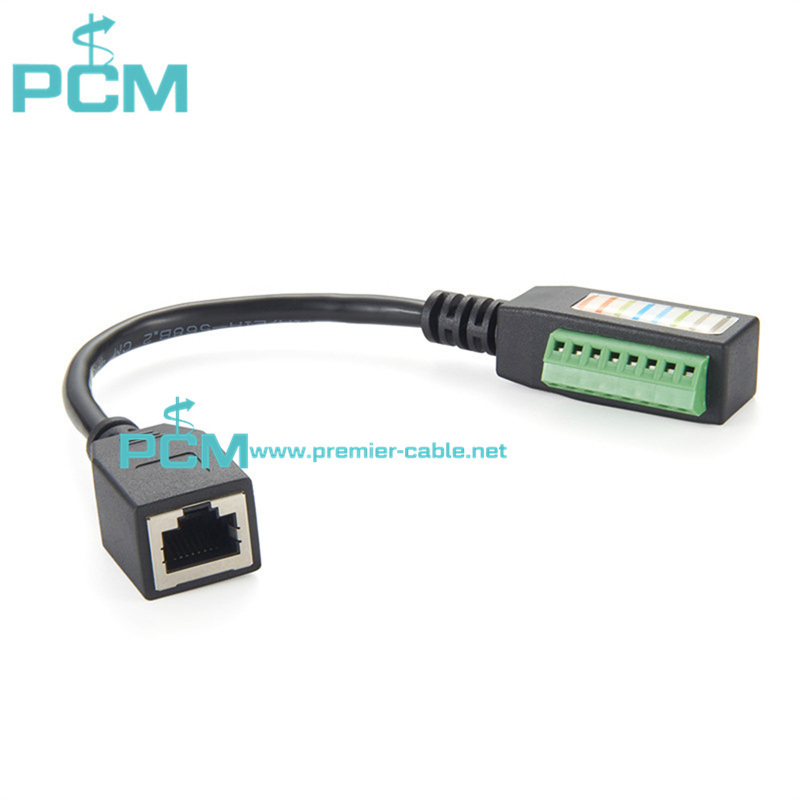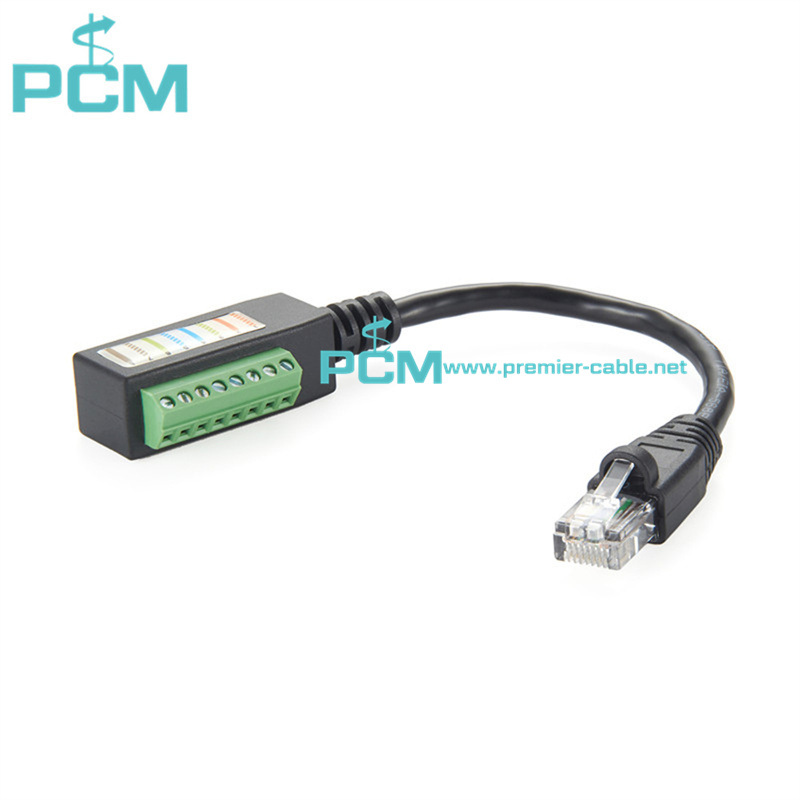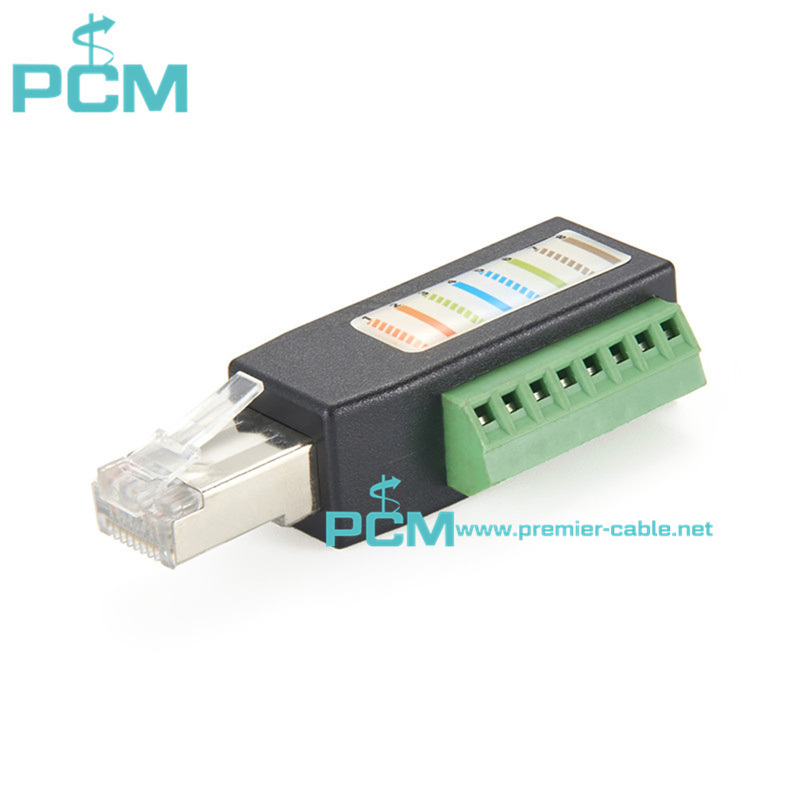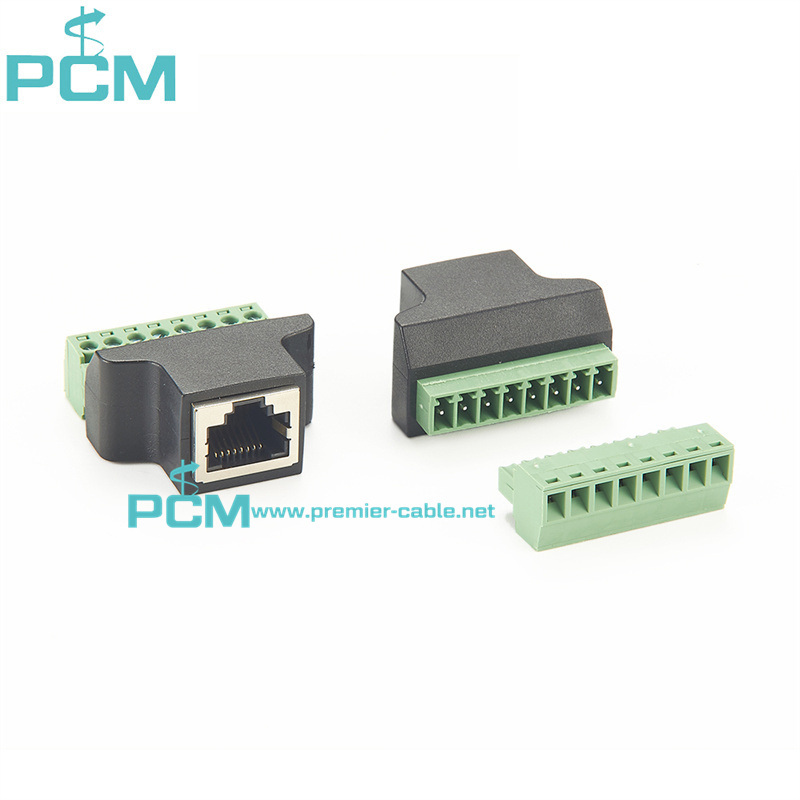 Esperanto
Esperanto
 Shqiptare
Shqiptare
 Euskara
Euskara
 Zulu
Zulu
 Latinus
Latinus
 Cymraeg
Cymraeg
 தமிழ்
தமிழ்
 Slovak
Slovak
 Slovak
Slovak
 Afrikaans
Afrikaans
News Center
What is the definition of RJ45 network cable interface and what is it used for?
Publish:
2022-06-26 11:10
Source:
www.premier-cable.net
What is the definition of RJ45 network cable interface and what is it used for?
1. Network cable interface, namely RJ45 interface
2. The RJ45 interface is usually used for data transmission, and the most common application is the network card interface.
3. RJ45 is a type of various connectors, for example: RJ11 RJ12 is also a type of connector, but it is used on telephones
The RJ45 interface refers to a modular plug or plug standardized by IEC(60)6037.
Uses 8 positions defined by international connector standards
IEC(60) 6037 is also the reference standard for the ISO/IEC11801 international general wiring standard for connecting hardware.
Ethernet has an interface using RJ45, as well as a home router and a computer broadband interface, which is RJ45
Unlike RJ11, RJ11 is equivalent to a phone line, connected to a modem, and the modem dials on the phone line
1. Definition of RJ45 interface RJ45 not only has interface, but also corresponding crystal head, mainly refers to 8-pin connector, mainly used for Ethernet, "RJ" means registered jack, "45" means interface standard serial number.
RJ45 usually connects the end to an Ethernet cable, which is used to connect various network devices such as computers, routers, switches, etc.
2. Types of RJ45 Interfaces There are many types of RJ45 interfaces, which are mainly divided according to cable standards. Common ones include Category 3, Category 5e, Category 6, Category 6e, etc.
RJ45 plug, also known as RJ45 crystal plug (RJ45 Modular Plug), is used for the termination of data cables to realize the connection and change between equipment and distribution frame modules.
The RJ45 crystal head is required to have good conduction performance; the gold-plated thickness of the contact three-pronged reed is 50μm, which meets the Super 5 transmission standard and conforms to the T568A and T568B line sequence; it has the functions of preventing loosening, plugging and unplugging, and self-locking.
The RJ45 plug is a standard connector in copper wiring, and it and the socket (RJ45 module) together form a complete connector unit. The connector composed of these two components is connected between the wires to realize the electrical continuity of the wires.
It is also an integral part of the finished jumper of the integrated wiring technology, and the RJ45 crystal head is usually connected to both ends of the twisted pair cable.
In the standard integrated wiring design and installation, this accessory product is usually not listed separately, that is, it is not recommended that the user complete the connection between the twisted pair and the RJ45 plug by himself.
RJ45 plugs are divided into two types: unshielded and shielded.
The shielded RJ45 plug is covered with a shielding cladding, and its physical appearance is no different from that of an unshielded plug.
There is also an industrial shielded RJ45 plug specially designed for the factory environment, which is used in conjunction with the shielded module.
There will also be an RJ11 interface on the home ADSL Modem, which is slightly smaller than the RJ45 interface and is mainly used to connect telephone lines.
It should be noted that the RJ11 interface is 4 or 6-pin, and the RJ45 is an 8-pin interface, so the RJ45 plug cannot be inserted into the RJ11 interface, and the RJ11 plug cannot be inserted into the RJ45 interface.
The RJ45 fixed link is backward compatible with RJ11, and the 3-6 and 4-5 pairs of RJ45 correspond to the 1-4 and 2-3 pairs of RJ11.
RJ45 Female to Terminal Block Cable
RJ45 to screw terminal block connector
RJ45 to 8 PIN Terminal Block Pigtail Cable
RJ45 8P8C Network Jack to Screw Terminal Block
Premier Cable make a lot of solderless RJ45 terminal block connectors and solderless RJ45 terminal block cables
It is very easy to use and no soldering needed, for more products info, please kindly go to https://www.premier-cable.net/product/Terminal-Block-20
If you need product details, drawings, and samples, you can use below contact info :
Skype : James198585
Wechat : 13929497934
James@premier-cable.net
sales@premier-cable-mfg.com




Related News
What is a terminal block used for?
While there are many factors to consider when designing an overall system, terminal blocks are an optimal solution for complex electrical system connections. With a variety of color options and configurations, Premier Cable’ terminal blocks offer a range of options to meet your design challenges.
CAN-bus has been widely used in various automation control systems. For example, CAN-bus has incomparable advantages in various fields such as automotive electronics, automatic control, smart buildings, power systems, and security monitoring.
Introduction to M12 connector pin coding
M12 encoding types are A encoding, B encoding, D encoding and X encoding. A-code, B-code and X-code are some of the earliest developed and longest-available M12 connectors. The latest M12 coding types currently under development are K coding for AC and L coding for PROFINET DC.
Cables – What are the correct cable sizes for an NMEA 2000 network?
The three different sizes of NMEA 2000 certified DeviceNet standard cabling are "micro," "mid," and "mini."
What are the advantages of NMEA 2000?
The Premier Cable Starter Kits provide everything you need to get to create a basic NMEA 2000 network from scratch.
The role of DeviceNet terminal resistor
DeviceNet_network is a fieldbus network protocol based on Controller Area Network (CAN). In the DeviceNet network, the terminal resistor plays the role of compensation and protection for signal transmission. The function of the terminal resistor is to eliminate signal reflection and interference and ensure the signal transmission quality.
